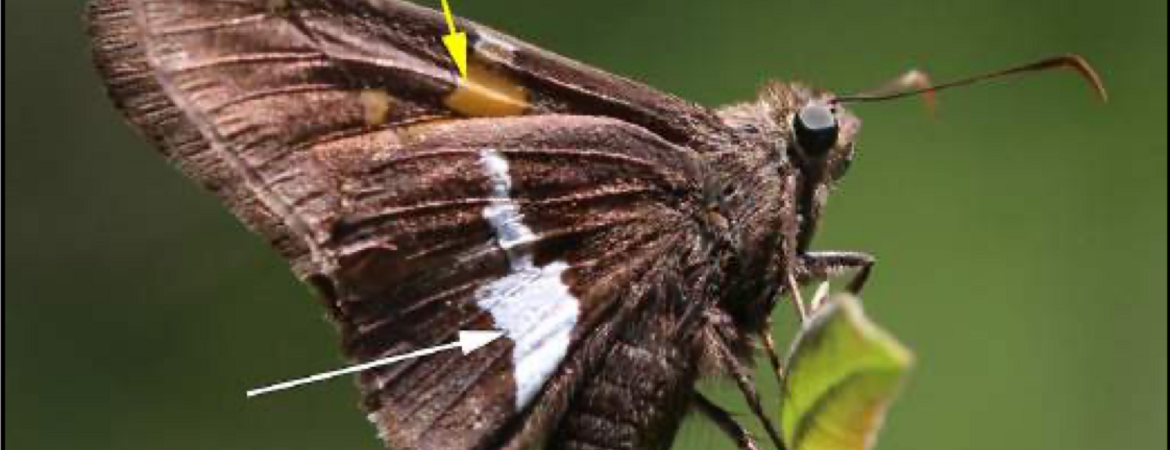
The Silver-spotted Skipper (Epargyreus clarus), one of the largest and most widespread species in the skipper family (Hesperiidae), has a wingspan between 1.5 – 2.5 inches. Both sexes look identical. Although it belongs to the Spread-wing Skippers, this species usually perches with its wings closed. The ground color of the wings and body are a brownish-black color, and they have large, dark bulging eyes. The hind wings are lobed and the forewings are pointed. The dorsal surface of the forewings has a band of irregular orange rectangles that are also visible from a ventral view. However, the key identifier is the very large irregular, silvery-white patch on the ventral hind wings. This skipper is difficult to follow as its flight is extremely fast and the white patch flashes as the butterfly moves through dappled light and shade.
The female lays eggs singly on plants of the pea family (Fabaceae). The larvae feed especially on black locust (Robinia pseudoacacia), American hog-peanut (Amphicarpaea bracteata) and also false indigo bush (Amorpha fruticosa); the latter plant is also the host plant for the California Dogface (Colias eurydice).
Like most skippers the larvae live in leaf shelters. The first instars make shelters by cutting a flap of the leaf and folding it over and attaching it with a silk thread, while later instars tie together several leaves with silken threads to create a protective nest. The mature larvae reach two inches in length and overwinter as pupae. The adults are fond of sipping nectar from flowers such as Buddleja, lantana and star flower, but also visit mud and animal feces to obtain additional nutrients.
Silver-spotted Skippers live in many different temperate habitats such as forest edges, swamps, brushy roadsides and riparian habitats at lower elevations. Their range is across the southern parts of Canada then south throughout most of the United States and into northern Mexico. In the northernmost parts of its range this butterfly only produces one brood per year, while in Southern California it produces two broods, and south of the border three or more broods per year have been reported.
Please plant California native and butterfly friendly plants in your garden to help restore our native habitat.
HAPPY BUTTERFLY GARDENING. AP